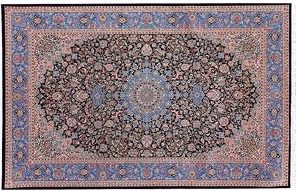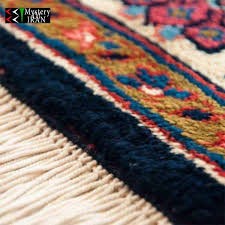Handmade Woolen Carpets
Handmade woolen carpets are a lifestyle statement, reflecting the owners taste and aesthetic sense, and as an important element in exuding a certain style and ambiance.
The most exclusive types and design styles are collector items which attract very high prices because there maybe very few such in existence, if not one offs made to order for the sophisticated collector.
Accordingly, inspecting them for conformity is a complicated task. The most critical area of scrutiny is uniformity of yarn size and color fastness.
Asian inspects a variety of types of carpets in differing styles, sizes and shape. Inspite of all the vigilance a certain level of flexibility has to be accepted, especially if the end product is a village or nomad carpet, the dyes used are homemade, and while being color fast the carpet can have deviations in colour, size and shape – that the carpet is not completely symmetrical, that the pattern has primitive looks and that the background colour changes in its nuances.
Hand knotted rugs possess certain inherent characteristics which aid in their uniqueness. Color variations in the field and or border, known as abrash, are a beautiful example of such a characteristic. The term abrash, is typically used to denote color changes or striations running horizontally across the face of a rug.
Abrash results from variations in the dyeing process. Most commonly, different dye lots may not result in a perfect match, particularly if small dye batches are used. The weaver runs out of one batch and restarts with another which may result in a shade difference. Although most people may prefer consistent and precise coloring in their rugs, abrash is often prized as a beautiful characteristic of an oriental or hand knotted rug.


Despite advancement and development that has occurred over the years, handmade carpets are mostly still made in the same way as they were hundreds of years ago. The art of weaving a carpet has been passed on for many generations and demands several different steps, which are all part of a handicraft tradition.
The material being used in a carpet determines the final result of the carpet and how it grows old. The most commonly used material is sheep wool, although other materials may also be used.
Sheep wool is most commonly used for the pile, warp and weft. Sheep wool is considered the most suitable for carpets, since it contains a mixture of short and long fibres.
Quality, price and life of a rug are determined by the knots used in weaving. A double knot product will last much longer, will have a higher pile and weighs almost double when compared to a carpet in which single knots have been used. Obviously double knot carpets will be more expensive where equivalent quality of materials and designs are used.
Given all the foregoing variations the essentials of a hand woven wool carpet inspection are;
- Consistency of wool used
- Type of knot and conformity to requirement
- Number of knots per square inch/meter
- Color fastness of dyes used
- Design verification
- Size of carpet- length x breadth
- Reverse side check for holes, stains or inconsistency
- Fringe and sides checked for cleanliness and finishing
- Weight of carpet and consistency in consignment
- Packing and marking





